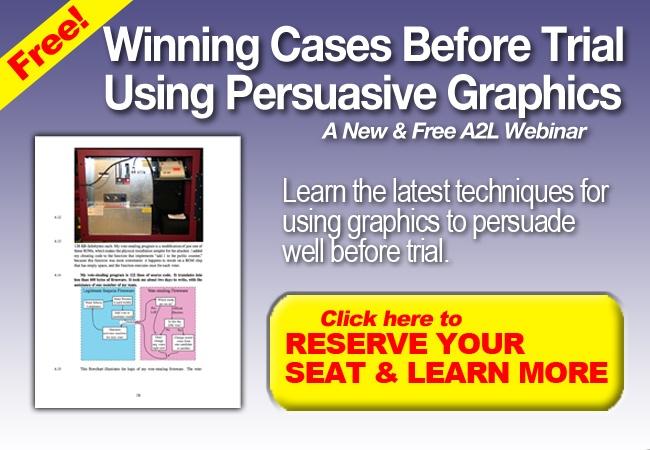by Tony Klapper
(Former) Managing Director, Litigation Consulting
A2L Consulting
Quite often, law firms hire companies like A2L before trial to do jury research. That research usually takes the form of bringing in a mock jury, exposing the mock jury to the story that will be presented by both sides, and then engaging the mock jury in a single-day (and sometimes multi-day) focus group exercise to find out what aspects of the two sides’ presentations worked and what didn’t.
The central part of these mock jury events is the dueling “clopenings” that are put on by different attorneys from the trial firm – one embodying the narrative that the firm is planning on behalf of its client and the other representing the firm’s best estimate of what its courtroom opponents are planning to do and say at trial. A “clopening,” as the term suggests, is a combination of opening statement, evidence and closing argument that is typically used in a mock trial.
What many people don’t realize is that in addition to testing the plausibility and effectiveness of the narratives for each side, mock trials are a crucial way, indeed the best way, to test the demonstrative evidence that one intends to use at trial.
Testing the visual persuasiveness of the exhibits is very important. For one thing, it is a key step in the iterative process that creates better and more helpful trial graphics. Fine-tuning the demonstrative evidence before trial through a carefully planned series of assessments can only make the graphics more convincing. Subjecting the graphics to the thoughts of people who may be similar to the jurors in the jury pool is invaluable. For another, this procedure gives the mock jurors the opportunity not only to tell the lawyers which graphics worked for them, but also to suggest ideas for new trial graphics that can help illuminate the case. Mock jurors are likely to help identify “holes” in the set of demonstratives that can be filled in. They can do that because mock jurors are ideally situated to identify areas of confusion or gaps of knowledge that that graphics are well-suited to clarify or close.
Trial lawyers should always think of testing the arguments in the “clopenings” and testing the graphics as a single, seamless process. You simply can’t separate the evaluation of the narrative from the evaluation of the demonstrative evidence that is designed to support it.
Other A2L resources discussing trial graphics, litigation graphics, and using demonstrative evidence to win at trial:
- Free Webinar: PowerPoint Litigation Graphics - Winning by Design™
- 13 Reasons Law Firm Litigation Graphics Departments Have Bad Luck
- A2L Careers in Trial Graphics, Jury Consulting and Trial Technicians
- 3 Observations by a Graphic Artist Turned Litigation Graphics Artist
- 21 Reasons a Litigator Is Your Best Litigation Graphics Consultant
- 6 Triggers That Prompt a Call to Your Litigation Consultant
- 11 Small Projects You Probably Don't Think Litigation Consultants Do
- 11 Things Your Colleagues Pay Litigation Consultants to Do
- 16 Litigation Graphics Lessons for Mid-Sized Law Firms
- 16 PowerPoint Litigation Graphics You Won't Believe Are PowerPoint
- Presentation Graphics: Why The President Is Better Than You
- 12 Reasons Bullet Points Are Bad (in Trial Graphics or Anywhere)
- Font Matters - A Trial Graphics Consultant's Trick to Overcome Bias
- 6 Studies That Support Litigation Graphics in Courtroom Presentations
- 8 Videos and 7 Articles About the Science of Persuasion
- Could Surprise Be One of Your Best Visual Persuasion Tools?






Leave a Comment